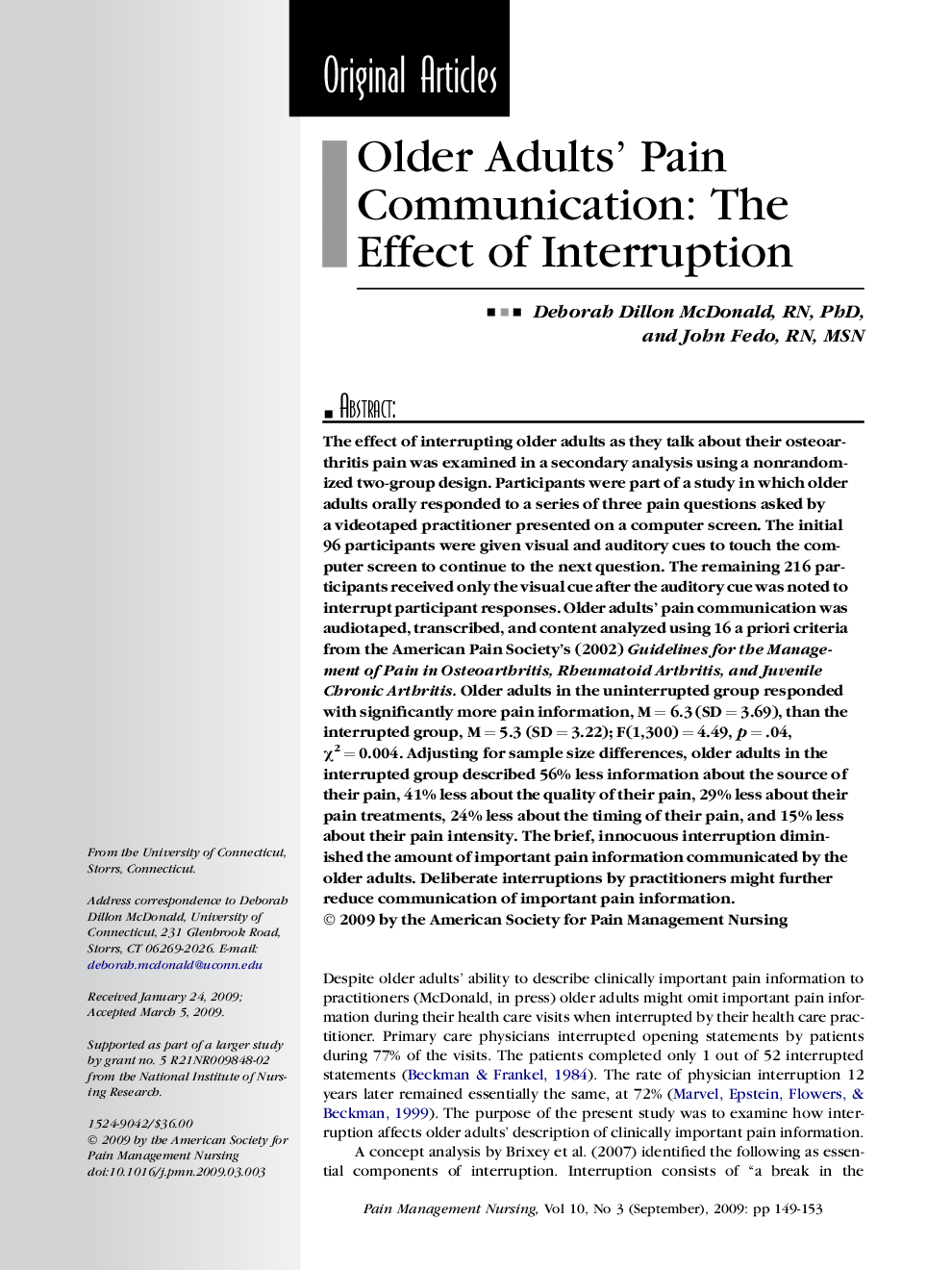| کد مقاله | کد نشریه | سال انتشار | مقاله انگلیسی | نسخه تمام متن |
|---|---|---|---|---|
| 2678187 | 1142059 | 2009 | 5 صفحه PDF | دانلود رایگان |

The effect of interrupting older adults as they talk about their osteoarthritis pain was examined in a secondary analysis using a nonrandomized two-group design. Participants were part of a study in which older adults orally responded to a series of three pain questions asked by a videotaped practitioner presented on a computer screen. The initial 96 participants were given visual and auditory cues to touch the computer screen to continue to the next question. The remaining 216 participants received only the visual cue after the auditory cue was noted to interrupt participant responses. Older adults' pain communication was audiotaped, transcribed, and content analyzed using 16 a priori criteria from the American Pain Society's (2002)Guidelines for the Management of Pain in Osteoarthritis, Rheumatoid Arthritis, and Juvenile Chronic Arthritis. Older adults in the uninterrupted group responded with significantly more pain information, M = 6.3 (SD = 3.69), than the interrupted group, M = 5.3 (SD = 3.22); F(1,300) = 4.49, p = .04, χ2 = 0.004. Adjusting for sample size differences, older adults in the interrupted group described 56% less information about the source of their pain, 41% less about the quality of their pain, 29% less about their pain treatments, 24% less about the timing of their pain, and 15% less about their pain intensity. The brief, innocuous interruption diminished the amount of important pain information communicated by the older adults. Deliberate interruptions by practitioners might further reduce communication of important pain information.
Journal: Pain Management Nursing - Volume 10, Issue 3, September 2009, Pages 149–153